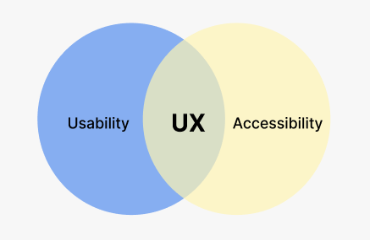UX Basics
UX is user-centred
UX is user-centred, addressing user needs and preferences throughout the design process by understanding their goals, behaviors, and limitations. It involves gathering feedback, conducting usability testing, and iterative improvements to align with user expectations and goals.

When it comes to 'doing UX,' it's crucial to take into account two primary aspects: accessibility and usability. Usability focuses on making products easy to use and efficient, while accessibility ensures inclusivity for people with disabilities. Both contribute to a positive User Experience (UX), providing an enjoyable and inclusive experience for all users, regardless of their abilities or needs.
Accessibility
Digital accessibility means making digital stuff like websites and apps easy to use for everyone including people with disabilities. And it is vital to user-centred UX for a few reasons:
- It is the law: Laws in many places say digital things must be accessible to people with disabilities. If you don't follow these rules, you could get into trouble.
- It involves every user: It ensures that no one is left out when using digital things. And it makes them better for everyone, not just people with disabilities.
- It makes our job easier: Thinking about accessibility now can save you trouble later as technology changes. It promotes a positive image for your organization, expands your user base, and ensures future adaptability.
You don't need to add extra features or duplicate content. The primary goal is to assess the needs of people with different skill levels and limited devices.
Find out more about digital accessibility guidance
Usability
'First law of usability: Don't make me think.' - Steve Krug
Hand in hand with digital accessibility, usability is another essential part of UX. Usability refers to the degree of ease and effectiveness with which users can interact with a product, system, or interface to achieve their goals. It encompasses factors like user-friendliness, efficiency, learnability, satisfaction, and error prevention when using a product or system. And in our case – at a higher education institution, it is a way to ensure our services/websites can be used as simply and painlessly as possible for our audiences. But who is your audience? Now is the time for us to do some UX.

